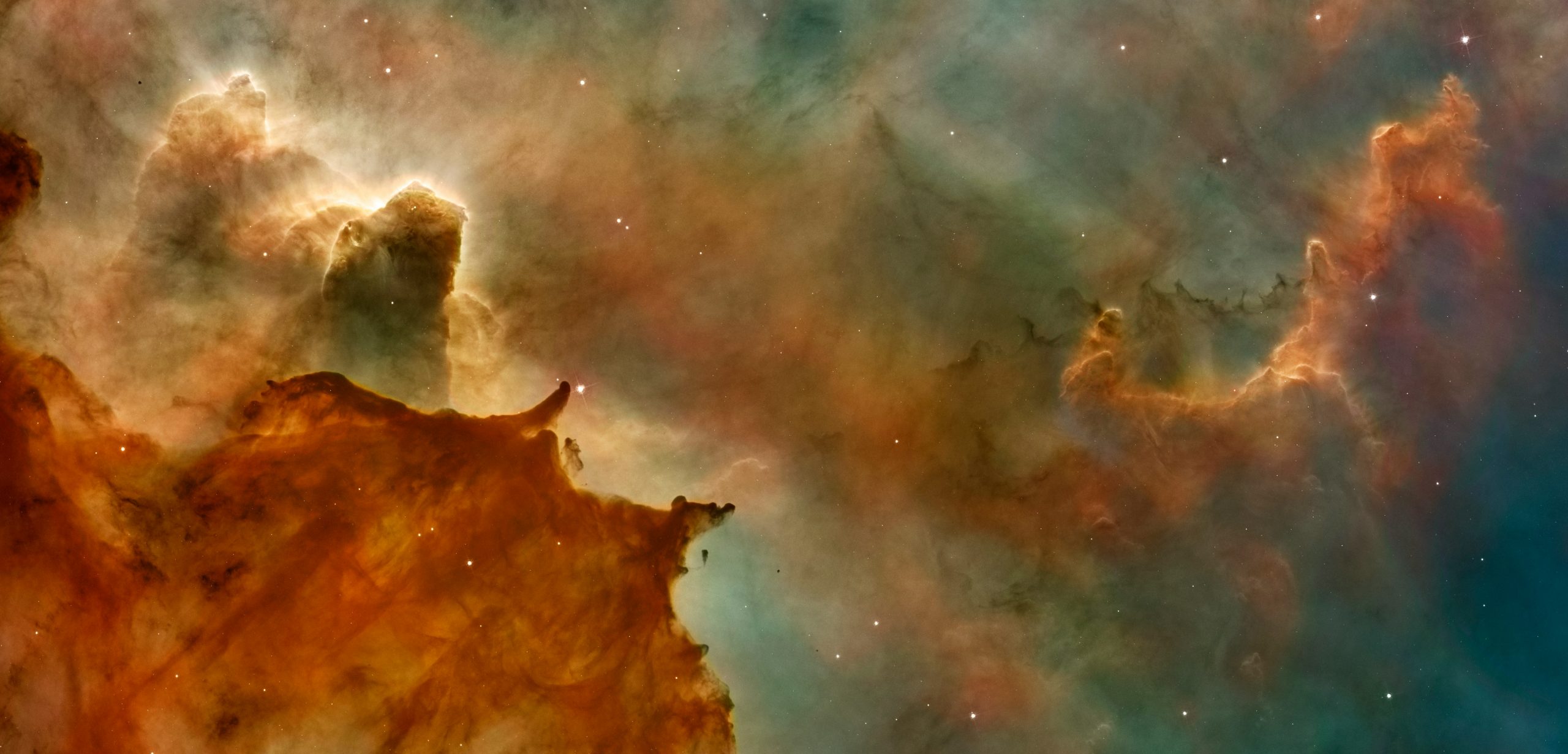The Valley of the Kings: Tombs of the Pharaohs

Before diving in, please note: This post is for informational purposes only. If you’d like to know more about how we approach topics, feel free to check out our friendly Disclaimer Page.
Hey there, amazing readers! 🖐️ Just a quick note: yes, we know there are a lot of ads here. Trust us, we get it—it’s not the prettiest look, but they help us keep this blog alive and kicking. Those pesky little ads cover the costs of all the behind-the-scenes magic, from hosting and tech stuff to creating content we hope you’ll love.
We’re committed to delivering quality posts, and your support (even just sticking around despite the ads) means everything to us. So, bear with us, and thanks for helping us keep the good vibes rolling. Now, on to the fun stuff! 😉
TRANSLATE BUTTON AT THE END OF THE ARTICLE
A Quick Overview
The Valley of the Kings stands as a monument to the grandeur and mystery of ancient Egypt.
Nestled on the west bank of the Nile, near Luxor, this arid expanse is home to the final resting places of some of the most powerful rulers in history.
As I delve into this intriguing burial ground, I hope to take you on a journey through time, exploring the tombs of the pharaohs, the fascinating beliefs that guided their burial practices, and the archaeological wonders that have emerged from this storied valley.
Exploring the Mystical Valley of the Kings
The Valley of the Kings is a site that captures the imagination.
With its rugged mountains and expansive desert scenery, it feels like stepping into another age.
The site is home to 63 known tombs, each carved into the limestone cliffs, waiting to tell their stories.
As I wander through this historic land, I can’t help but feel a connection to those who once roamed these grounds.
The valley’s allure is not just in its tombs but also in its rich history.
Picture this: ancient Egyptians believed that death was just a transition to another life.
They constructed elaborate tombs to ensure their kings made this journey successfully.
It’s a fascinating blend of spirituality and artistry that we see in each excavation.
Visiting the Valley of the Kings today is like opening a time capsule.
Guided tours take you through some of the most stunning and well-preserved tombs.
You can almost hear the whispers of the past as you explore.
The hieroglyphics, paintings, and artifacts transport you back thousands of years, making it a once-in-a-lifetime experience.
The site is also a UNESCO World Heritage site, recognized for its cultural significance.
This adds another layer of preservation, ensuring these treasures remain intact for future generations.
With every step, I feel the weight of history and the stories that linger in the air.
A Brief History of the Valley’s Royal Significance
The Valley of the Kings was established during the 18th dynasty of the New Kingdom (around 1539–1075 BCE).
It became the primary burial ground for pharaohs, replacing the earlier practice of building grand pyramids.
This shift reflects a change in beliefs and customs regarding death and the afterlife.
Why the valley, you might ask?
Its remote location was ideal for protecting the tombs from tomb robbers.
The decision to move away from pyramids also coincided with a desire for secrecy.
The pharaohs wanted their final resting places to remain hidden from those who might seek to disturb them.
Over time, the valley became a royal burial ground for notable figures, including the famous Tutankhamun, Seti I, and Ramses II.
Each tomb tells a story of the individual it belonged to, offering insights into their reign and beliefs.
The inscriptions and artwork within these chambers provide a window into their lives.
The significance of the Valley of the Kings extends beyond just the pharaohs.
It also served as a religious and cultural symbol, showcasing the incredible craftsmanship of artisans who spent years creating these elaborate burial sites.
The valley itself became a canvas, reflecting the spiritual beliefs of the time.
As I explore the history, I can’t help but admire the dedication and artistry that went into each tomb.
These were not just burial sites; they were legacies meant to endure through the ages.
The Valley of the Kings teaches us about the ancient Egyptians’ views on death, power, and the everlasting quest for immortality.
The Pharaohs: Who Were They and Why It Matters
The pharaohs were more than just rulers; they were considered living gods on Earth.
Each one wielded immense power, overseeing vast territories and responsible for the spiritual well-being of their people.
Their reigns often marked periods of significant cultural and economic growth.
Why does this matter today?
The pharaohs left behind a legacy that continues to captivate the world.
Their accomplishments in architecture, art, and governance influenced civilizations for centuries.
When I think about it, they laid the groundwork for many aspects of modern society.
One of the fascinating aspects of being a pharaoh was the divine right to rule.
Egyptians believed that the pharaoh was the intermediary between the gods and the people.
This belief shaped their governance and influenced their monumental achievements, from the construction of temples to the establishment of trade routes.
Each pharaoh had a unique story, often marked by triumphs and tragedies.
Take Ramses II, for example, often referred to as Ramses the Great.
His reign was characterized by military conquests and monumental building projects.
He left behind a legacy that still resonates today.
Understanding the lives of these rulers helps us appreciate the intricate tapestry of ancient Egyptian society.
Their stories are reflections of human ambition, beliefs, and the quest for legacy.
Each tomb in the Valley of the Kings serves as a testament to their influence and the timeless allure of their reigns.
The Fascinating Geography of the Valley of the Kings
The Valley of the Kings is located in a unique geographical setting that adds to its mystique.
Surrounded by steep cliffs, the valley offers a natural barrier, making it an ideal site for securing the tombs of the pharaohs.
The arid landscape is reminiscent of a vast desert, creating an almost eerie atmosphere.
The valley is divided into two main areas: the East Valley and the West Valley.
The East Valley, where most of the tombs are located, holds the most famous and well-preserved burial sites.
It’s fascinating how each tomb is strategically designed and situated to align with the ancient Egyptians’ beliefs about the afterlife.
As I walk through the valley, I can’t help but marvel at the stark beauty of the landscape.
The combination of sand and sun gives it an otherworldly feel.
The shadows cast by the towering cliffs create dramatic contrasts, further enhancing the experience.
The climate plays a crucial role in the preservation of the tombs.
Despite the harsh conditions, the dry air prevents moisture damage, which is a blessing for the artifacts and paintings kept inside.
This preservation is critical for archaeologists and historians who study these remnants of the past.
The valley itself is surrounded by other significant sites, including the Temple of Hatshepsut and the Colossi of Memnon.
This makes it a hub of ancient Egyptian history, offering visitors a chance to explore various facets of the civilization.
Each site tells its own story, contributing to the broader narrative of ancient Egypt.
Key Discoveries: Tombs That Changed Archaeology
Throughout the years, the Valley of the Kings has been the site of groundbreaking archaeological discoveries.
Each excavation has unveiled treasures that have reshaped our understanding of ancient Egypt.
The discovery of Tutankhamun’s tomb in 1922 by Howard Carter is perhaps the most famous example.
When Carter first entered the tomb, he was greeted by a sight that took his breath away.
The wealth of artifacts, gold, and intricate designs were overwhelming.
This discovery not only sparked global interest in Egyptology but also provided invaluable insights into the burial practices of the time.
Other significant tombs, such as those of Seti I and Ramses VI, have also been excavated, revealing rich paintings and artifacts that shed light on the beliefs and customs of the ancient Egyptians.
Each tomb tells a unique story, contributing layers to our understanding of this fascinating civilization.
The art found within these tombs is striking.
It’s not just decoration; it serves a purpose.
The images depict scenes from the afterlife, rituals, and the pharaoh’s journey.
This artistic storytelling offers a glimpse into the values and beliefs held by the ancient Egyptians.
I find it captivating how each discovery leads to more questions than answers.
Archaeologists often joke that the more they learn, the more they realize how much they don’t know.
Every new find opens up new avenues for research and understanding, making the Valley of the Kings a never-ending source of intrigue.
The impact of these discoveries extends beyond academia.
They have fostered a global fascination with ancient Egypt, inspiring movies, books, and countless documentaries.
Each find is like a piece of a puzzle, and we are all eager to see how it fits together.
The Stunning Architecture of Pharaohs’ Final Resting Places
When we think of the tombs in the Valley of the Kings, stunning architecture immediately comes to mind.
These structures are not just holes in the ground; they are masterpieces of ancient engineering and artistry.
The careful planning and execution of each tomb reflect the importance of the pharaohs and their beliefs.
The tombs typically feature a series of chambers, including an entrance, a corridor, and burial chambers.
The walls are adorned with hieroglyphics and paintings, often depicting scenes of the afterlife, gods, and daily life.
It’s incredible how much detail went into crafting these spaces.
One noteworthy aspect is the use of symbolic colors and motifs.
For example, blue often represents the sky and the afterlife, while red symbolizes power and fertility.
Each color choice adds layers of meaning, enhancing the overall narrative of the tomb.
The layout of the tombs is also significant.
Many are designed to mimic the journey to the afterlife, guiding the pharaoh through various stages of his journey.
This thoughtful design illustrates the depth of the ancient Egyptians’ beliefs about life after death.
As I explore these tombs, I am struck by the sheer scale and ambition behind their construction.
The labor required was immense, with teams of skilled artisans and workers dedicating years to complete them.
It’s a testament to the importance of the pharaohs and their desire for a grand final resting place.
One of the most famous examples is the tomb of Seti I, known for its elaborate decoration and complex architecture.
It’s often considered one of the finest tombs in the valley, showcasing the pinnacle of ancient Egyptian craftsmanship.
Tutankhamun: The Boy King and His Tomb Treasures
Tutankhamun, often referred to as the "Boy King," is one of the most well-known figures in ancient Egyptian history.
His tomb, discovered in 1922, is a treasure trove of artifacts that has captivated the world.
But who was he, and why is his tomb so significant?
Ascending to the throne at a young age, Tutankhamun ruled for a short period before his untimely death.
His reign is often overshadowed by the discoveries made within his tomb, which revealed a wealth of information about royal life and burial practices.
Within the tomb, archaeologists found over 5,000 items, including golden masks, ornate jewelry, and everyday objects.
Each item tells a story, offering insights into both the opulence of royal life and the rituals surrounding death.
The iconic golden burial mask, in particular, has become a symbol of ancient Egypt.
The fact that Tutankhamun’s tomb was largely untouched by tomb robbers adds to its significance.
Other tombs had been plundered over the centuries, but this one provided a rare glimpse into the burial practices of the time.
It felt like a window into the past, revealing the richness of the ancient Egyptians’ beliefs about the afterlife.
Exploring the treasures of Tutankhamun is like wandering through a museum that holds the essence of a civilization.
From intricate canopic jars to elaborately decorated chariots, each artifact carries a piece of history.
It’s a reminder that even in death, the pharaohs sought to maintain their status and influence.
The fascination with Tutankhamun continues to this day.
Exhibitions dedicated to his treasures draw millions of visitors eager to learn more about this enigmatic figure.
It’s heartwarming to see the continued interest in ancient Egypt and how it brings people together.
Secrets of Mummification: Preserving the Pharaohs
Mummification is one of the most intriguing aspects of ancient Egyptian culture.
The process of preserving the dead was believed to ensure a successful journey to the afterlife.
This practice reflects the Egyptians’ deep-seated beliefs about death and immortality.
The mummification process involved several steps, starting with the removal of internal organs.
The brain, surprisingly, was often discarded, while the heart was usually left in place, believed to be the seat of intelligence and emotion.
The organs were treated and placed in canopic jars for protection.
Once the body was prepared, it was wrapped in linen and treated with resins and oils to help with preservation.
The meticulousness of this process is astonishing.
It wasn’t just about preserving the body; it was about maintaining the identity of the individual in the afterlife.
As I learn about mummification, I realize it was both a science and an art.
The embalmers were skilled professionals, often held in high regard.
They employed various techniques honed over generations, ensuring the bodies would withstand the passage of time.
The elaborate funerary goods buried alongside the mummies reflect the belief that the deceased would need these items in the afterlife.
It’s fascinating how the ancient Egyptians prepared not just for death but for the life that followed.
Interestingly, the study of mummies has provided modern scientists with valuable insights into ancient diseases and lifestyles.
Each mummy is a time capsule, offering clues to our understanding of health and medicine in ancient Egypt.
The Role of the Ancient Egyptian Afterlife Beliefs
The ancient Egyptians had profound beliefs regarding the afterlife.
They viewed death not as an end but as a transition to a different existence.
This belief shaped their burial practices and led to the creation of the elaborate tombs we see today.
The concept of Ma’at, which represented truth, balance, and order, was central to their beliefs.
The deceased were judged by Osiris, the god of the afterlife, in a ceremony known as the "Weighing of the Heart." Here, their heart was weighed against a feather.
If it balanced, the soul was deemed worthy to enter the afterlife.
It’s fascinating how these beliefs influenced every aspect of life for the ancient Egyptians.
They lived with an awareness of death and the afterlife, and this awareness shaped their actions, rituals, and the very fabric of their society.
The tombs were filled with items intended to assist the deceased in their journey.
Everyday objects, food, and treasures were included, showcasing the belief that one could take these items into the next life.
It was as if they were preparing for a journey to a parallel world.
As I ponder on these beliefs, I recognize how they illustrate the human desire for immortality.
The ancient Egyptians sought to defy death, crafting elaborate narratives and rituals to ensure their continued existence in the afterlife.
These beliefs have left a lasting legacy.
They resonate with many cultures today, reminding us of our shared humanity and the universal quest for understanding what lies beyond death.
Modern Archaeology: Tools and Techniques Uncovered
The field of archaeology has evolved significantly since the early discoveries in the Valley of the Kings.
Today, scientists employ advanced tools and techniques that allow for a deeper understanding of this ancient civilization.
Non-invasive methods, such as ground-penetrating radar and 3D imaging, have revolutionized the way we explore tombs.
These technologies enable archaeologists to survey sites without disturbing the delicate structures, preserving them for future study.
One exciting development is the use of drones to map the valley.
These flying cameras capture high-resolution images that provide an aerial perspective of the area, revealing possible undiscovered tombs.
It’s a thrilling time to be involved in archaeology!
Moreover, the study of DNA from mummies has opened new avenues of exploration.
It allows researchers to understand lineage, health, and even the geographical origins of ancient Egyptians.
This genetic information adds depth to our understanding of the people who inhabited this land.
As I reflect on these advancements, I’m reminded of the collaborative nature of archaeology.
International teams come together to share knowledge and techniques, enhancing our understanding of ancient cultures.
It highlights our collective pursuit of knowledge and the importance of preserving history.
The excitement of discovery continues to fuel interest in Egyptology.
Each new technique and discovery brings us closer to understanding the lives of those who came before us.
The Valley of the Kings remains a treasure trove of knowledge waiting to be explored.
Visiting the Valley: Tips for an Unforgettable Experience
If you’re considering a trip to the Valley of the Kings, I can’t recommend it enough!
It’s a mesmerizing destination that offers a glimpse into ancient history.
Here are some tips to help you make the most of your visit:
Timing: Visit early in the morning or late in the afternoon to avoid the intense midday heat.
The golden light during these times creates beautiful contrasts in the landscape.
Wear Comfortable Shoes: The terrain can be uneven, so sturdy shoes will make your trek more enjoyable.
Stay Hydrated: The desert climate can be dry, so bring plenty of water.
It’s easy to lose track of time while exploring.
Guided Tours: Consider joining a guided tour.
Local guides provide invaluable insights and stories that enrich your experience.
Respect the Sites: Many tombs have strict regulations to help preserve the delicate art and artifacts.
Follow the rules to ensure these treasures endure.
Photography: Check the rules regarding photography.
In some areas, flash photography is prohibited, and it’s essential to respect those guidelines.
Explore Nearby Attractions: Don’t miss the nearby Temple of Hatshepsut and the Colossi of Memnon.
Each site offers a unique perspective on ancient Egyptian history.
Plan for the Evening: If possible, stay for the sunset.
The colors reflecting off the cliffs and the valley create an unforgettable scene.
Travel Insurance: Safety first!
Make sure to have travel insurance in case of unforeseen events.
Enjoy the Journey: Embrace the experience!
Take your time to soak in the history and beauty around you.
Visiting the Valley of the Kings is a journey through time.
Each step tells a story, and I promise you’ll leave with memories that last a lifetime.
Celebrating the Legacy: The Valley Today and Beyond
The Valley of the Kings is more than just an archaeological site; it’s a living testament to a remarkable civilization.
Today, we find ourselves at a crossroads where the past meets the future.
The legacy of ancient Egypt continues to inspire and captivate people around the globe.
Efforts to preserve the valley are ongoing.
Archaeologists and conservationists work tirelessly to maintain the integrity of the tombs and artifacts.
Their dedication ensures that future generations can experience the wonder of this extraordinary place.
Exhibitions showcasing treasures from the Valley of the Kings travel worldwide, bringing ancient Egypt to life for audiences everywhere.
The fascination with pharaohs, mummies, and hieroglyphics creates a cultural bridge that connects us all.
As I think about the future, I am optimistic.
The advancements in technology and a renewed interest in Egyptology promise exciting discoveries ahead.
Each excavation has the potential to deepen our understanding of this incredible civilization.
The Valley of the Kings serves as a reminder of our shared history.
It teaches us about the triumphs and struggles of those who came before us.
It’s a celebration of human achievement, creativity, and the quest for immortality.
In closing, my journey through the Valley of the Kings has been nothing short of transformative.
It’s a place where history comes alive, and every corner holds a secret waiting to be uncovered.
I hope you feel inspired to explore this magical land and experience its wonders for yourself.
Conclusion
The Valley of the Kings is a remarkable glimpse into ancient Egypt’s past, inviting us to ponder the lives and beliefs of the pharaohs.
From the breathtaking tombs to the artifacts that speak of a rich culture, every visit leaves a lasting impression.
As we celebrate this legacy, let us remember the stories, the artistry, and the dedication that created these timeless treasures.
May the Valley of the Kings continue to enchant and educate generations to come.

The Enlightenment Journey is a remarkable collection of writings authored by a distinguished group of experts in the fields of spirituality, new age, and esoteric knowledge.
This anthology features a diverse assembly of well-experienced authors who bring their profound insights and credible perspectives to the forefront.
Each contributor possesses a wealth of knowledge and wisdom, making them authorities in their respective domains.
Together, they offer readers a transformative journey into the realms of spiritual growth, self-discovery, and esoteric enlightenment.
The Enlightenment Journey is a testament to the collective expertise of these luminaries, providing readers with a rich tapestry of ideas and information to illuminate their spiritual path.
Our Diverse Expertise 🌟
While our primary focus is on spirituality and esotericism, we are equally passionate about exploring a wide range of other topics and niches 🌍📚. Our experienced team is dedicated to delivering high-quality, informative content across various subjects ✨.
To ensure we provide the most accurate and valuable insights, we collaborate with trusted experts in their respective domains 🧑🏫👩🏫. This allows us to offer well-rounded perspectives and knowledge to our readers.
Our blog originally focused on spirituality and metaphysics, but we’ve since expanded to cover a wide range of niches. Don’t worry—we continue to publish a lot of articles on spirituality! Frequently visit our blog to explore our diverse content and stay tuned for more insightful reads.







